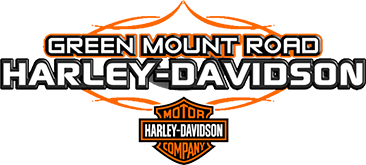Hard-Headed: 8 Things You Should Know About Motorcycle Helmet Sizing
Every Biker knows that the helmet is the "pièce de résistance" that ties the entire slider-look together.
More importantly than the look, it provides protection for your dome in case of an accident on the road.
However, most Bikers never learn the tricks to proper motorcycle helmet sizing and often end up buying the wrong size or style for their needs.
Listed below are 8 things to know about finding the right helmet for burning the highway trail!
8 Facts of Motorcycle Helmet Sizing
An hour or two of research can save you over years of regret in purchasing the wrong motorcycle helmet.
Here are all the factors you should consider when choosing your next helmet.
Find Your Favorite Design
Probably the most obvious step of all of them; no motorcyclist is going to opt for a helmet's protection features if they don't like the way it looks.
That said, there's thousands of different designs and models to choose from, so your options are virtually limitless.
Take the time beforehand to research a few styles that you like, which ones match your bike's style, and filter it down to a few makes that you enjoy.
Also consider the main use for your helmet.
will you be breezing down the highway? If so, maybe you'd enjoy an open-faced helmet to feel the wind against your cheeks, or a full-face helmet to quiet the noise (and extra protection).
Consider the Helmet's Material
Surprisingly, the material your helmet is made of will affect several elements such as how heavy it is, comfort, pricing, etc.
Lighter materials like Polycarbonate and carbon fiber will heavily determine the helmet's price.
While this shouldn't deter you from a certain style, it's important to know for safety reasons.
Look up the Safety Ratings
Because the main purpose for a helmet is to protect your head in case of emergency, you'll need to check into the safety ratings on any helmet you're interested in.
There are four main certifications to look out for: The US Department of Transportation (DOT), The U.N. Economic Commission for Europe (ECE22.05), Snell (M2015), and SHARP.
While it's not necessary to research the specifics to each of these, it IS important that the helmet you're interested in has passed at least one, if not several of them.
Check the Reviews
With so many different helmet brands to choose from, it can be hard to tell which companies you can trust.
It's possible that a brand specializes in open-face models and thus may not be the brand you want to go to for a full-face helmet.
That's why it's important to check the reviews on any model you're interested in.
Reading up on other's experiences will help you figure out which of your favorite styles are the most trustworthy.
Measure Your Cranium
There are two parts to this step: first, figure out what your head shape is (round or oval), and then measure the size of your head from there.
Find a soft tape measure (the kind that tailors use) to see what your head size is.
Wrap the tape measure around your head the way you would wear a fitted cap: placed midway down your forehead and wrapped around to the back of your skull.
Make sure you're measuring the widest part of your skull. The thought process here is that if the helmet fits the widest part of your head, it will fit everything else.
Try Several Helmets On
Now that you have a few designs that you're eyeballing and know the size of your head, it's time to try some helmets on!
Even if the styles that you're eyeing are online-only, it's in your best interest to find a nearby bike store and try a few helmets on that look similar to the ones that you're thinking of buying.
Doing a few trial runs will help you realize a few other factors such as ear fitting, itchiness, if the padding pulls your hair, if the helmets run true-to-size, etc.
Walk Around in the Helmet
While you're trying on the helmet, make sure to walk around with it on to check out other intangible factors.
Can you see out of your peripherals clearly with the helmet? Is your vision obstructed at all? How's the ventilation inside the helmet?
Also pay close attention to whether the helmet shakes or slides as you walk around. If so, you'll want to go down a size and let the helmet break in a bit over time.
It's better to have a snug helmet that will break in over time (as long as it isn't constricting) than to have a lose helmet.
Keep the Helmet on for 10 Minutes
It's not enough to quickly put a helmet on for a few seconds, say "it feels good", then take it off moments later.
Even a quick joyride on your bike will last upwards of 10-20 minutes, so you need to see what that 10 minutes feels like in the helmet you want.
You can determine within seconds which helmets fit right and which don't, but then filter it down to the one you like most and wear it around for 10 minutes.
After 10 minutes you should have a pretty good indication of whether it's too big, too small, or a perfect "Goldilocks" fit!
Find the Bike of Your Dreams!
Now you have the proper motorcycle helmet sizing technique to find the best fit.
What good is an amazing helmet without the motorcycle of your dreams to pair it with?
Be sure to check out the 2020 Harley Davidson Family line and find the H-D that fits your needs.
For any other questions or inquiries, please call 618-622-0045.
